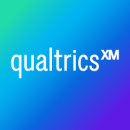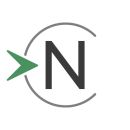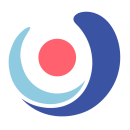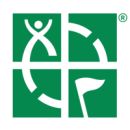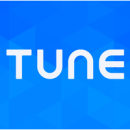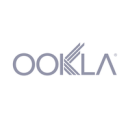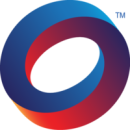Never before in human history has something so abstract — keystrokes and digital data — been able to create such tangible results in the real world. So while it’s fun for engineers to jump headlong into code, real professional satisfaction comes from believing in the end product, and the effect it will have on users and their communities. To learn more about the sources of inspiration for Seattle engineers, we spoke to coders at eight local tech companies about the projects they’re most proud of, and what they’re working on now.

Qualtrics believes that businesses are all about experience — experiences for customers and employees, experiences with brands and products. What started as a tool for academic research in 2002 has since turned into a sprawling “experience management” tool — and judging by its $8 billion acquisition by SAP last year, Qualtrics must be onto something.
Software Engineering Manager Jamie Morningstar finds satisfaction in leading an internal leadership development group for women and her work commanding artificial intelligence teams.
Tell us about a project you’ve worked on at your company that you’re really proud of. What role did you play in this project?
I'm super proud of the chance to co-found our Women’s Leadership Development group at Qualtrics. Working for such a rapidly growing company provides so many growth opportunities, both in our normal “day jobs” of software engineering and also in building the company and culture we really want. A few years ago, three of us wrote up a proposal to start a women’s group and since then it’s grown to hundreds of members with over 10 committees and local chapters.
The technology is compelling — I get to use cutting-edge techniques to solve complex problems, which is every engineer’s dream.”
What are you working on at the moment? What do you enjoy most about this project?
I lead the natural language processing and machine learning research teams at Qualtrics. It’s a dream job. The technology is compelling — I get to use cutting-edge techniques to solve complex problems, which is every engineer’s dream. Knowing that every feature and enhancement we create is enabling every Qualtrics customer to do better, more effective and more data-driven experience management means a lot to me. And the icing on the cake is that the teams I work with are filled with the smartest, most customer-focused and nicest people I have ever worked with.
ServiceNow’s signature cloud-based software facilitates workflow management and collaboration, helping to boost productivity and ensure that projects move seamlessly between teams. The technology also automates manual workflows across IT, security, customer service, human resources and more.
Software Engineer Ben Stephens started work at ServiceNow after the company acquired his startup last year, and enjoys using his technical skills to save customers money in their SaaS spending.
Tell us about a project you’ve worked on at your company that you’re really proud of. What role did you play in this project?
I was co-founder and principal engineer at VendorHawk, and wrote a large part of VendorHawk’s codebase. Since ServiceNow acquired VendorHawk in 2018, my team and I have been busy integrating VendorHawk’s top features to ServiceNow’s software asset management solution. It’s exciting because this is a major benefit to our customers, and my team and I have built direct-to-vendor integrations into ServiceNow that will empower our customers to manage their top SaaS vendors all in one place. I am really proud to work on an awesome product and platform that help our customers operate more efficiently, and prevents SaaS license management from falling through the cracks.
We believe our customers’ success is our success, and I get to make a difference with them every day.”
What are you working on at the moment? What do you enjoy most about this project?
Another big capability my team and I are bringing to ServiceNow is “software spend detection.” This project is a blast to work on because I get to collaborate with other teams and learn more about machine learning. The feature we’re working on is all about showing customers what they are actually paying their vendors, as well as uncovering shadow IT purchasing that can lead to overlapping software consolidation opportunities. We believe our customers’ success is our success, and I get to make a difference with them every day.

Navigating Cancer’s “patient relationship management” software facilitates easy communication between cancer patients and their healthcare providers. The company raised $12 million in funding earlier this year, which it is using to build out its mobile solutions and expand its data analytics capabilities.
The company’s mission-driven approach is important to Lead Data Engineer Dr. Bhanu Kaushik.
Tell us about a project you’ve worked on at your company that you’re really proud of. What role did you play in this project?
We are building our next-generation healthcare data platform, which enables seamless integration across our current solutions and third-party data sources. I am the lead data engineer on this project, and we are developing algorithms and workflows to deliver data solutions in the oncology space, provide meaningful patient engagement and treatment insights, optimize clinic operations management and enable greater visibility into treatment and patient care trends.
I truly value being able to have an impact on the lives of oncology patients at a critical time in their journey.”
What are you working on at the moment? What do you enjoy most about this project?
We are still finalizing our next-generation healthcare data platform, and I enjoy working on all aspects of this project. A few of the areas I most enjoy include ensuring that data is acquired and presented in real-time; creating an immersive feedback loop between patients, providers, and pharmaceutical companies; and enabling providers, pharma companies, and patients to make insights-driven decisions. I truly value being able to have an impact on the lives of oncology patients at a critical time in their journey and being a part of a mission-driven business like Navigating Cancer.

Remember those razor-sharp kids at school who used to love studying for big tests? Well, it appears they’ve all gone to work at Varsity Tutors, building software that connects students with tutors who are vetted experts in everything from GRE prep to basic algebra. Users find and book appointments at a time and place that works for them, and the company also builds online and mobile-based tutoring solutions for remote learning.
Senior Software Engineer Todd Calvert took us through his work streamlining workflows for the company’s sales reps.
Tell us about a project you’ve worked on at your company that you’re really proud of. What role did you play in this project?
I’m most proud of my work as technical lead and primary developer on a sales lead processing pipeline. When a potential customer submits a request for our tutoring services, the request is processed through a multi-stage pipeline. Each stage of the pipeline augments the request data, routing the lead to the most qualified available sales representative. The flexible architecture enables us to add more data sources and machine learning algorithms into the pipeline as we iteratively experiment our way into the optimal solution.
Empowering the sales team to fulfill more customers’ needs in less time is very rewarding.”
What are you working on at the moment? What do you enjoy most about this project?
I’m working on a project automating the distribution of work, enabling our sales teams to get the right work at the right time. The data-driven approach begins with warehousing all the data into a data lake. We then interrogate the data, leveraging many technologies to intelligently distribute the work. Empowering the sales team to fulfill more customers’ needs in less time is very rewarding.

Employees at Geocaching’s Fremont headquarters help build and maintain the world’s largest treasure-hunting game, where players use the Geocaching app and GPS-enabled devices to hunt down caches hidden by other users. The company was founded in 2000, and has never accepted outside investment.
Android Developer Jenn Parker and Senior Software Developer Heather Walicki both said they value Geocaching’s commitment to a quality user experience.
Tell us about a project you’ve worked on at your company that you’re really proud of. What role did you play in this project?
Walicki: I’m proud of our leaderboard system, which allows players to compete individually or in teams against other players to find various types of geocaches, and view what geocaches their friends are discovering. I created the system during our “10 percent time,” which is a program that allows engineers to take one afternoon each week to work on a project of their choosing that they believe will help improve the game for our community. The program has enabled us to make enhancements and test features we might not otherwise have had the bandwidth to prioritize.
I appreciate that Geocaching HQ values high quality work and allows us room to continually improve our product.”
What are you working on at the moment? What do you enjoy most about this project?
Parker: Right now I'm adding a variety of new deep links to the Android app and consolidating some of the existing deep link code. What I enjoy most about this particular project is that, in addition to adding new features, I am able to spend some time refactoring and consolidating the existing code. The result of this “tech debt” type work is a more readable code base, less duplication and better structured app architecture. As a developer, I appreciate that Geocaching HQ values high quality work and allows us room to continually improve our product.

TUNE’s SaaS platform builds, manages and grows partner networks in the pursuit of effective affiliate marketing partnerships. The platform comes fully customized for the needs of advertisers, allowing individual marketing teams to tailor their dashboards, reports and more to their own specific needs.
VP of Engineering Steve McQuade highlighted his team’s investments in infrastructure as code.
Tell us about a project you’ve worked on at your company that you’re really proud of. What role did you play in this project?
We believe that engineering teams should be empowered to choose technologies and approaches to solve problems instead of being forced into patterns or choices. Often this results in the creation of frameworks or enabling capabilities such as our Tune Experience Language user experience libraries that make building new tools and solutions easier — we don’t have to reinvent the wheel in a lot of cases. One new technology and approach for us is leveraging Airflow to create and monitor workflows based on directed acyclic graph tasks written in Python. Airflow has made it easy to understand chained tasks in a workflow, and ultimately lets us move faster when building data pipelines.
It’s all about enabling engineering teams to be as efficient as possible...”
What are you working on at the moment? What do you enjoy most about this project?
Reducing friction and automation. It’s all about enabling engineering teams to be as efficient as possible so they can focus on building great systems and solutions. We’ve really doubled down on concepts such as “infrastructure as code” via Terraform to make provisioning, configuration and management of infrastructure repeatable, predictable, and easy to do. Since infrastructure is now treated just like code — viewable, editable, reviewable, versioned and tested — engineering teams are empowered to understand our environment and make changes. We’ve been able to extend the infrastructure as code mantra to our CI/CD processes by leveraging GitLab CI. This allows us to have the same viewing, reviewing, and versioning that our other code has and makes it easier for us to standardize our testing and deployment methods.

Oddly named Ookla (it was named after a cat) is constantly monitoring the speed and performance of fixed broadband and mobile internet networks, performing more than 10 million tests each and every day. The company turns those monumental of data into research tools, designed to help a range of clients plan WiFi networks, analyze service outages and much, much more.
Data Scientist Sheryl Petersen took us through the projects she’s been working on lately.
Tell us about a project you’ve worked on at your company that you’re really proud of. What role did you play in this project?
I’m stoked that I got to play a role in bringing our new product line in coverage metrics live. I validated, tuned and documented the methodology for calculating “time spent on cellular technology.” Cleaning data is always fun! And contrary to popular sentiment, I really enjoy creating documentation.
I love that this project gives me the opportunity to expand my statistical repertoire and interact closely with members of the product and back-end teams.”
What are you working on at the moment? What do you enjoy most about this project?
Currently, I’m working on developing our methodology for operator ratings. I love that this project gives me the opportunity to expand my statistical repertoire and interact closely with members of the product and back-end teams. I also enjoy the support of the entire data science team on this project for advice, feedback and geeking out.

Tempered Networks says it can reduce digital infrastructure attack surfaces by about 97 percent. How? The Lower Queen Anne-based company’s software addresses IP network vulnerabilities and stack fatigue in IoT networks, boosting security across entire systems.
Director of Quality Assurance Dan Stratton and Senior Software Development Engineer in Test Thomas Pham described recent projects designed to boost efficiency for Tempered Networks’ signature product.
Tell us about a project you’ve worked on at your company that you’re really proud of. What role did you play in this project?
Pham: A project that the test team is very proud of is “Tempered Networks Automation.” The level of productivity of our development team is greater than any I have experienced during my career. The only way the test team can keep up with the high quantity of work while maintaining a high quality standard is through investments in automation. Everyone on the test team has contributed to TN AUTO — over the last three years, we have gone from 0 to 1,000 daily automated tests.
The thing I enjoy most is that we investigate and handle the complexity in-house so that the customer can just point and click with confidence.”
What are you working on at the moment? What do you enjoy most about this project?
Stratton: I have worked on so many exciting items here at Tempered Networks. Every day, I get to come in and play with networking, security and compatibility, all while manipulating our products within our test infrastructure. My latest fun task was setting up, incorporating and testing the many network permutations that our new port isolation capabilities introduce to our product line. Tcpdump is my friend! The thing I enjoy most is that we investigate and handle the complexity in-house so that the customer can just point and click with confidence.



